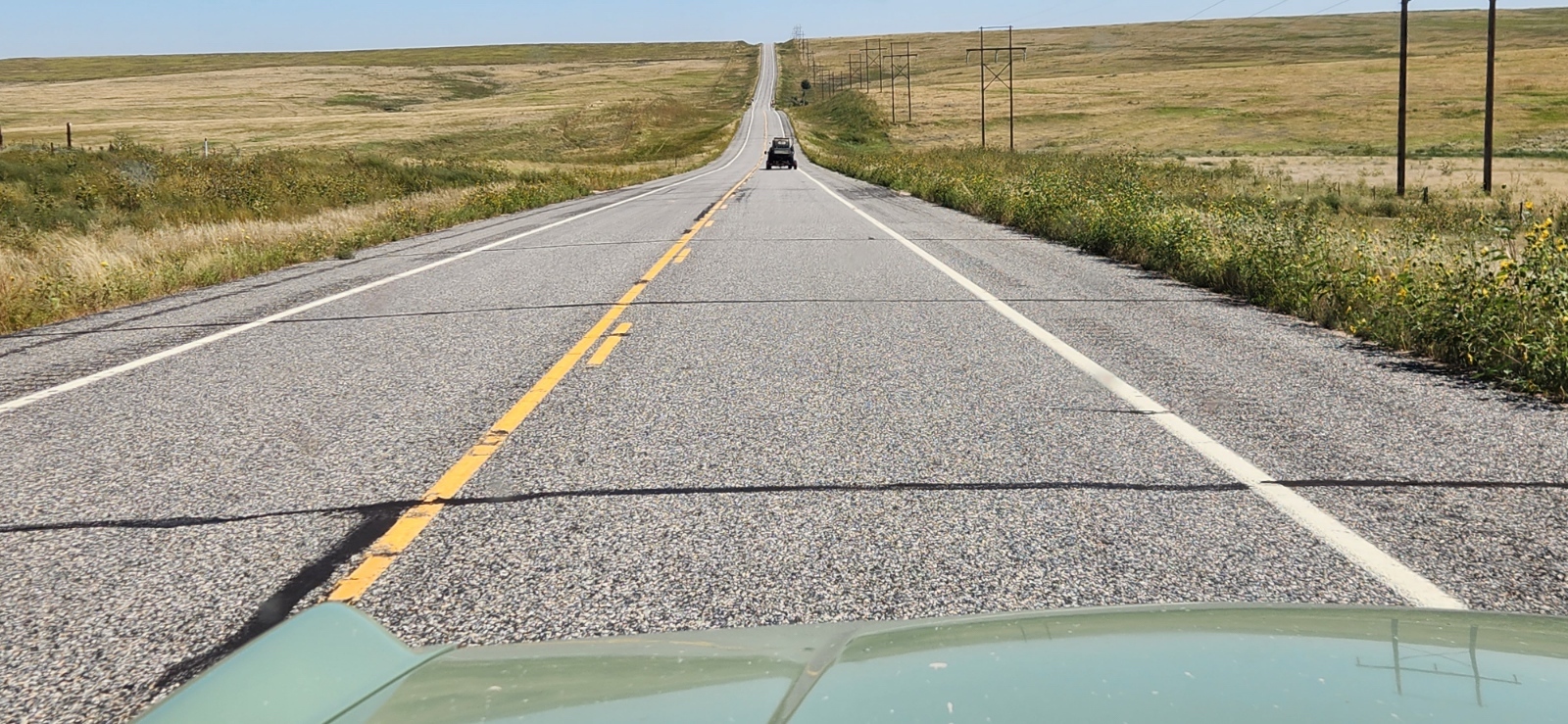When I see ancient vehicles like these I am certain they will never be driven again… and there is someone, somewhere, who could make that happen.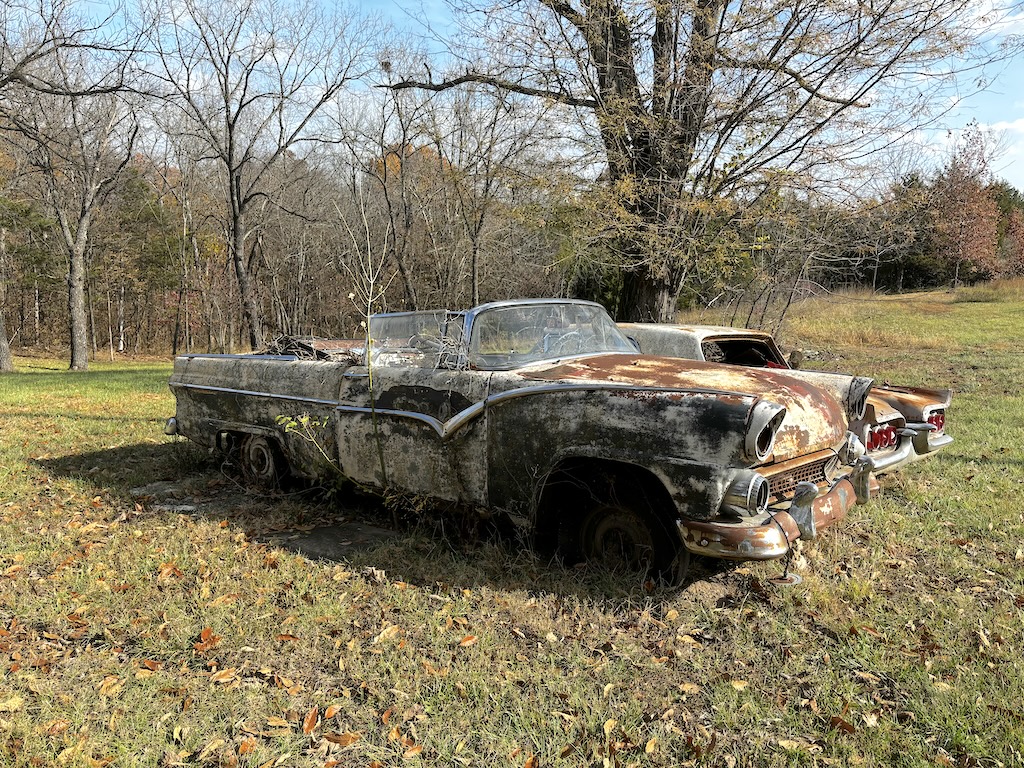
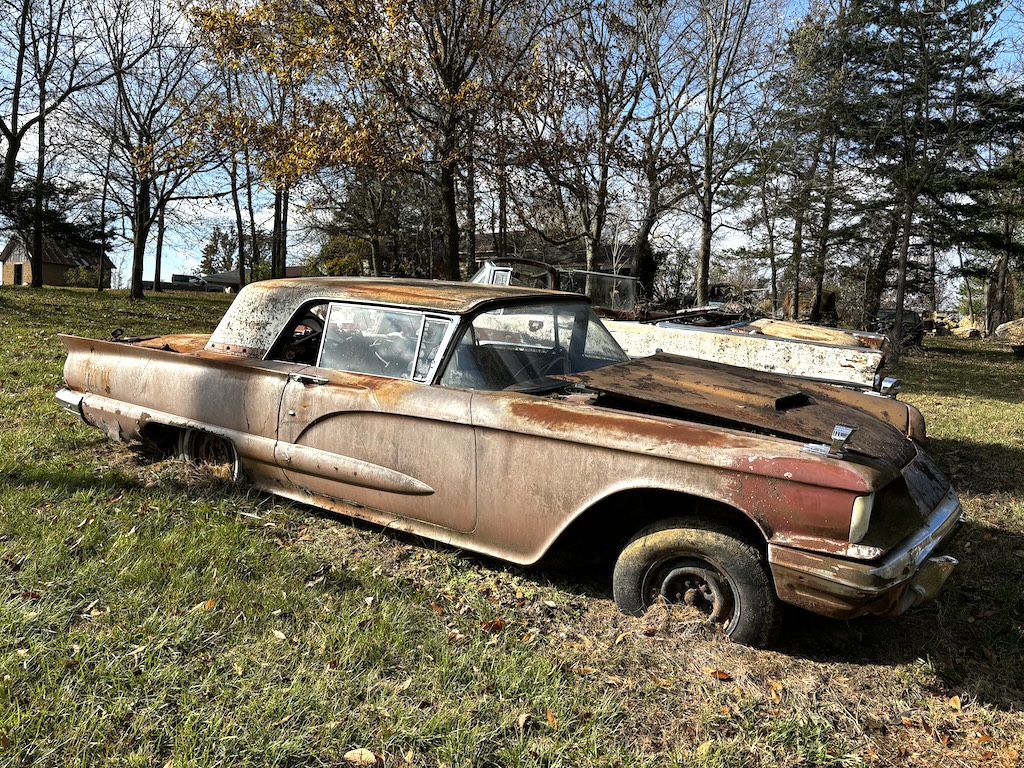
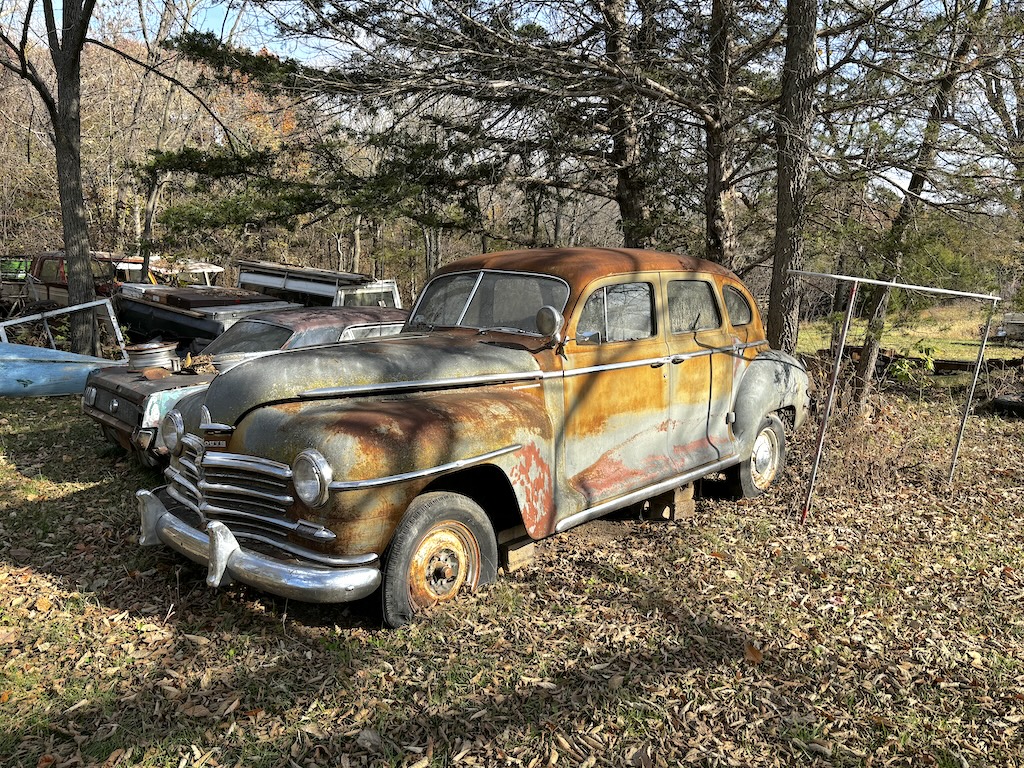
Category Archives: Cars & Trucks
Jeep ready for cold weather
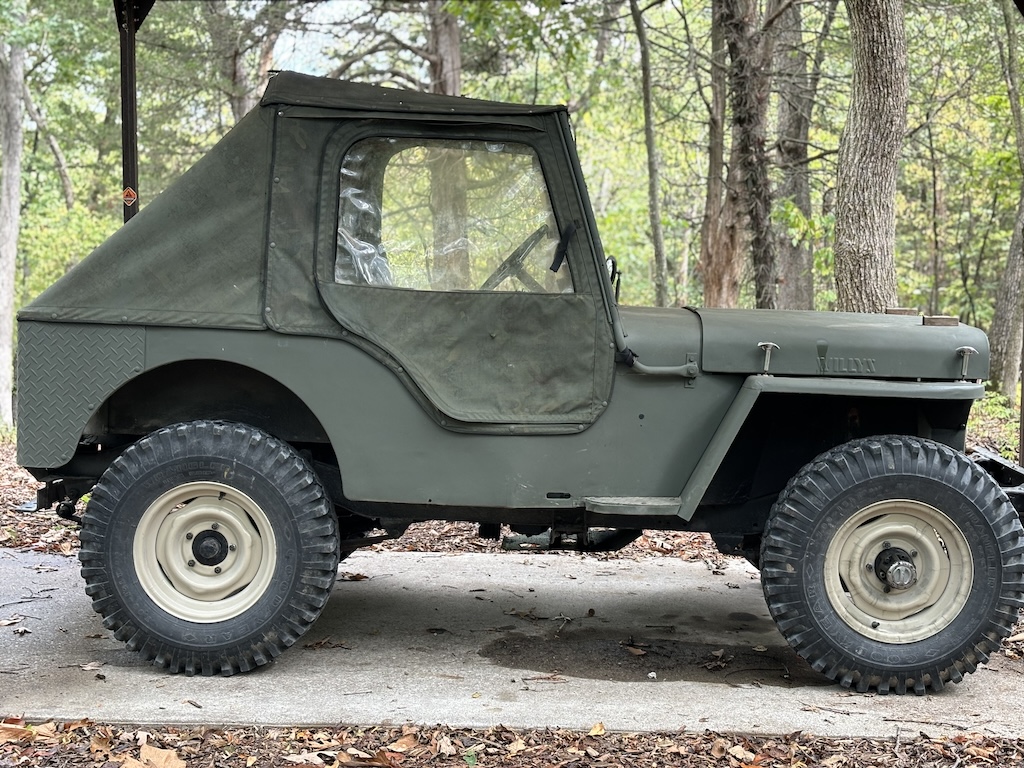
Crankcase ventilation kit for the Jeep
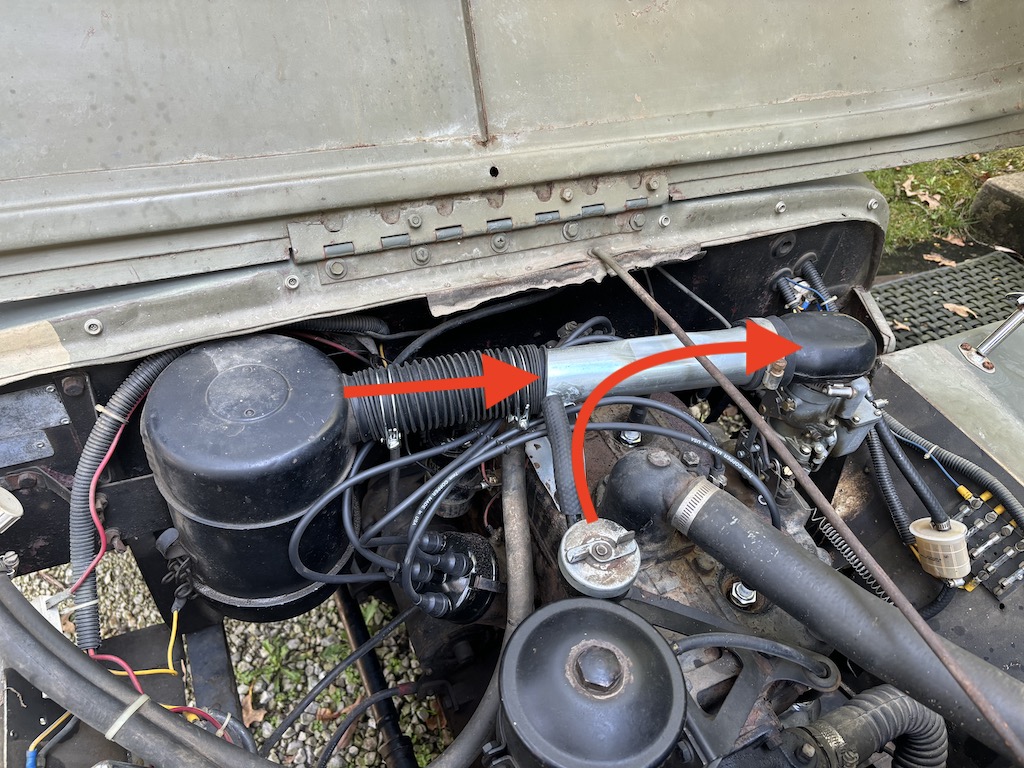
(Wikipedia) “A crankcase ventilation system removes unwanted gases from the crankcase of an internal combustion engine. The system usually consists of a tube, a one-way valve and a vacuum source (such as the inlet manifold).”
“The unwanted gases, called “blow-by”, are gases from the combustion chamber which have leaked past the piston rings. Early engines released these gases to the atmosphere simply by leaking them through the crankcase seals. […] Positive crankcase ventilation (PCV) systems— first used in the Second World War and present on most modern engines— send the crankcase gases back to the combustion chamber, as part of the vehicle emissions control, in order to reduce air pollution.”
The pickup got a little love today as well. Raising the hood was always a bit of struggle but the new hinges made it so stiff I had to use a tire iron to pry the hood up. A new hood spring fixed the problem.
Bag Ass Truck
One of the “Bandelier Bandits” showed up today driving highly customized 2001GMC C-6500. A local artisan created one very big pickup truck. I think the price tag on this is $12,500. In case you’re wondering… two-wheel drive. There is nothing practical about his truck. It’s a work of art.
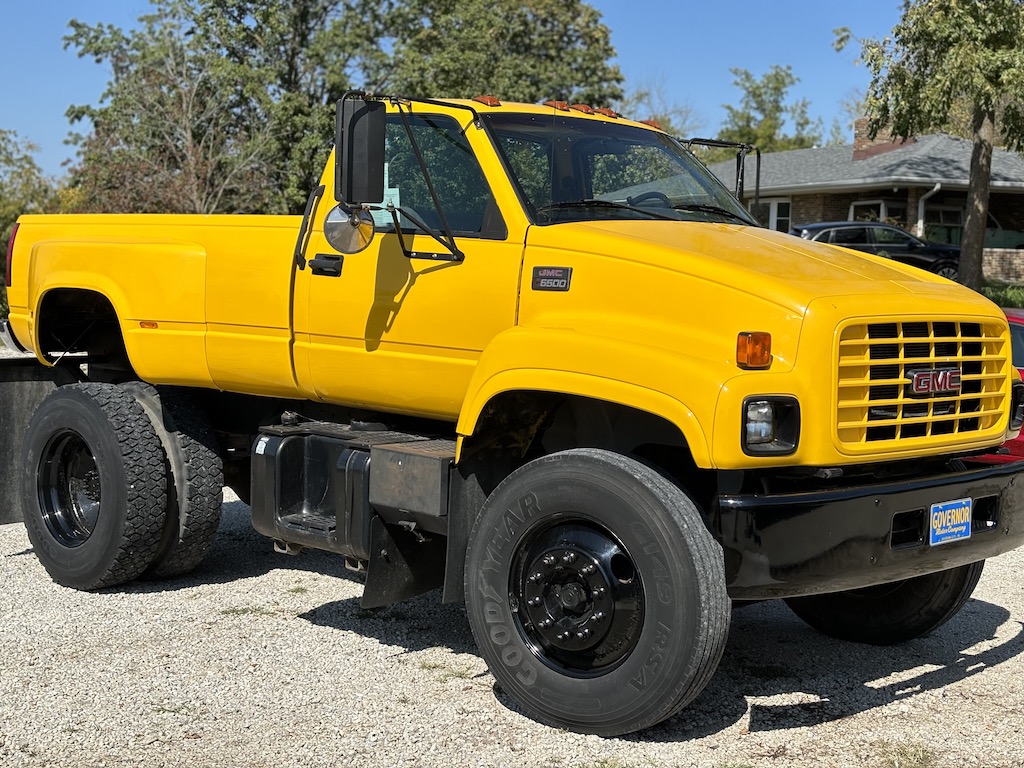
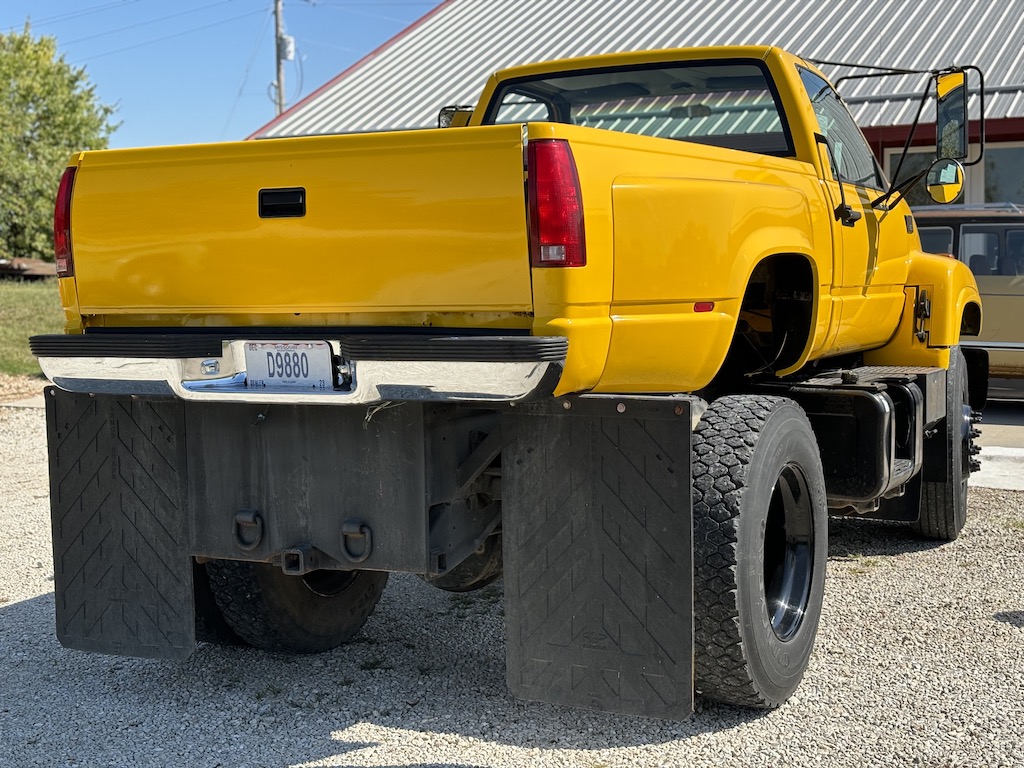
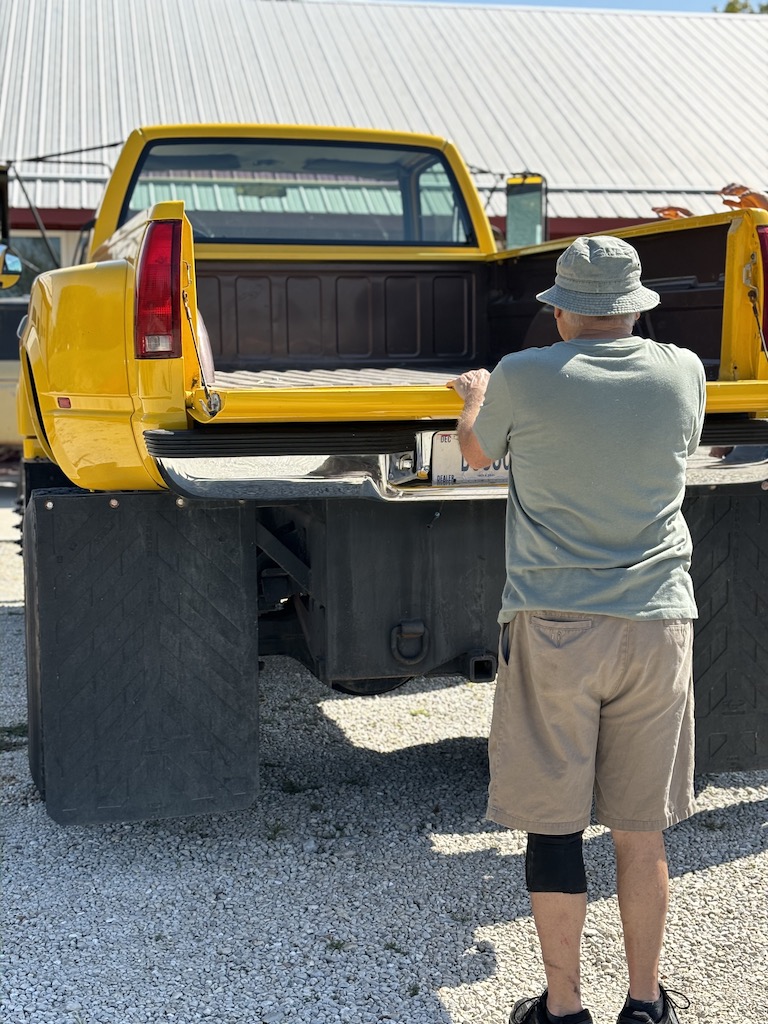
1946 Jeep CJ2A
I spent a couple of hours at the Jeep Reunion that took place in Fulton, MO on Friday and Saturday (I’ll share a few photos in a separate post). The highlight for me was the Latimer Family Jeep, a 1946 CJ2A.
The Jeep has been handed down to C. J. Latimer who was at the reunion with his father, step-father and grandmother. It was purchased by C. J.’s great grandfather in 1946 for use on the family farm near Marshall, MO.
A local businessman opened a Willys distributorship just after the war and the Latimer Jeep was the first one sold in Saline County. C. J.’s great grandfather purchased the Jeep for $150 and it arrived in a crate, ready for assembly!
The Latimer Jeep has an extension to the tub that was sold as a dealer accessory for agricultural use. According to family history, Great grandpa Latimer had to sign an affidavit that the Jeep would be used for agriculture. And when it was time to put up hay, the Jeep could be put in low gear and great grandpa Latimer could walk along beside the Jeep loading bales of hay.
C.J’s great-grandfather added a glove compartment but the Jeep is –for the most part– unchanged since it was purchased almost 80 years ago. The only hands that used and worked on the Jeep were C. J’s grandfather and great grandfather.
C. J. plans to get the Jeep drivable but plans no other changes.
Jeep back in service
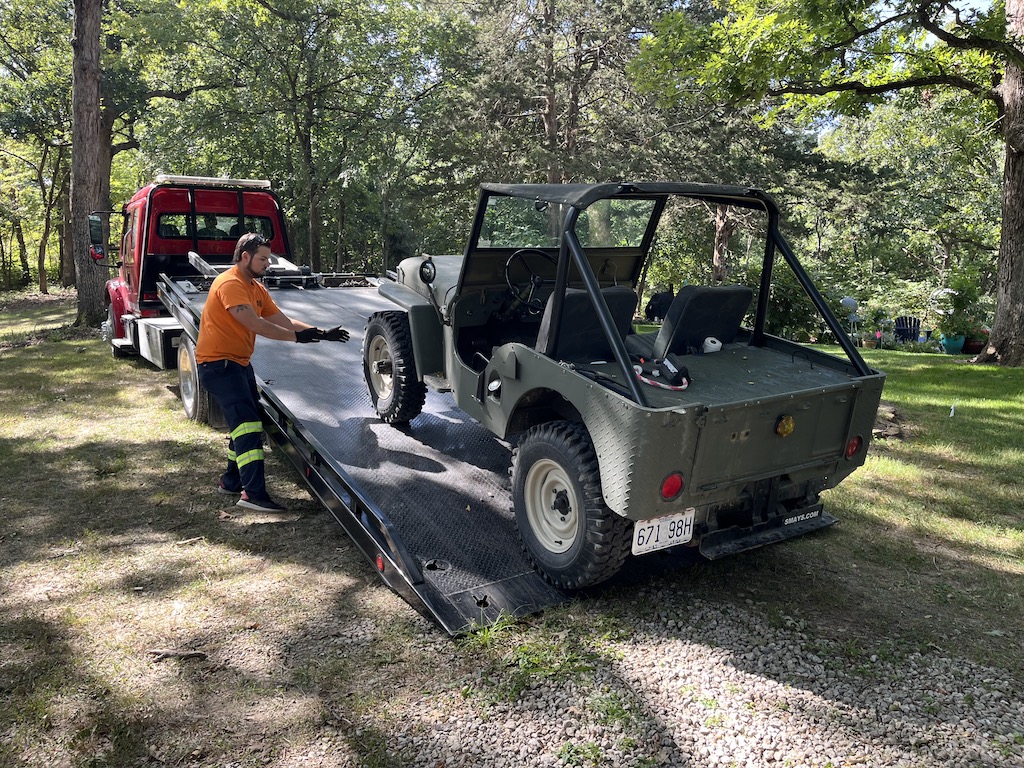
The Jeep has been out of service for the last week or two so today we put it on a truck and took it to Dr. Paul’s Automotive Clinic. Took a hour or two but he figured it out.
The ignition switch failed and was feeding juice into the system even when the ignition was in the OFF position. That burned up the points and condenser in the distributor; the coil; and the tachometer. Paul replaced everything and she fired right up.
Jeep Reunion
The annual Jeep Reunion in Fulton, MO was modest as such events go (a plus in my book) and I didn’t go nuts with photos. To my newbie eye there was a sameness to many of the Jeeps, but a few caught my eye.
Engine of a 1946 CJ2A. Owners insist very little has been done to the Jeep over the years.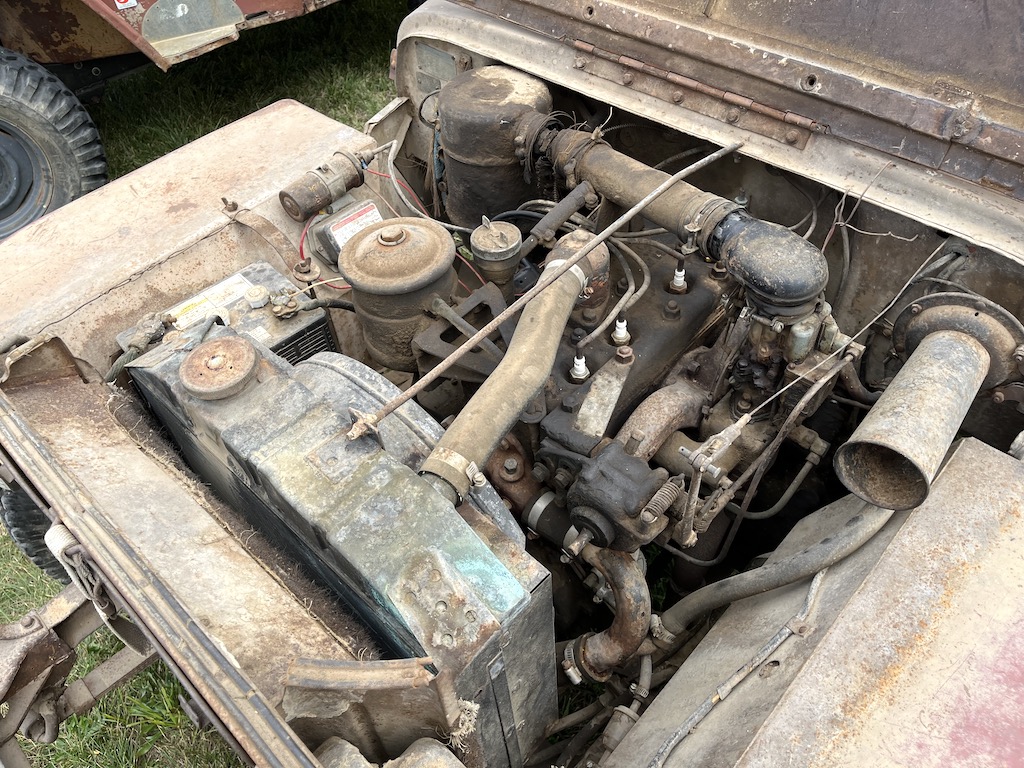
1948 Delivery Sedan
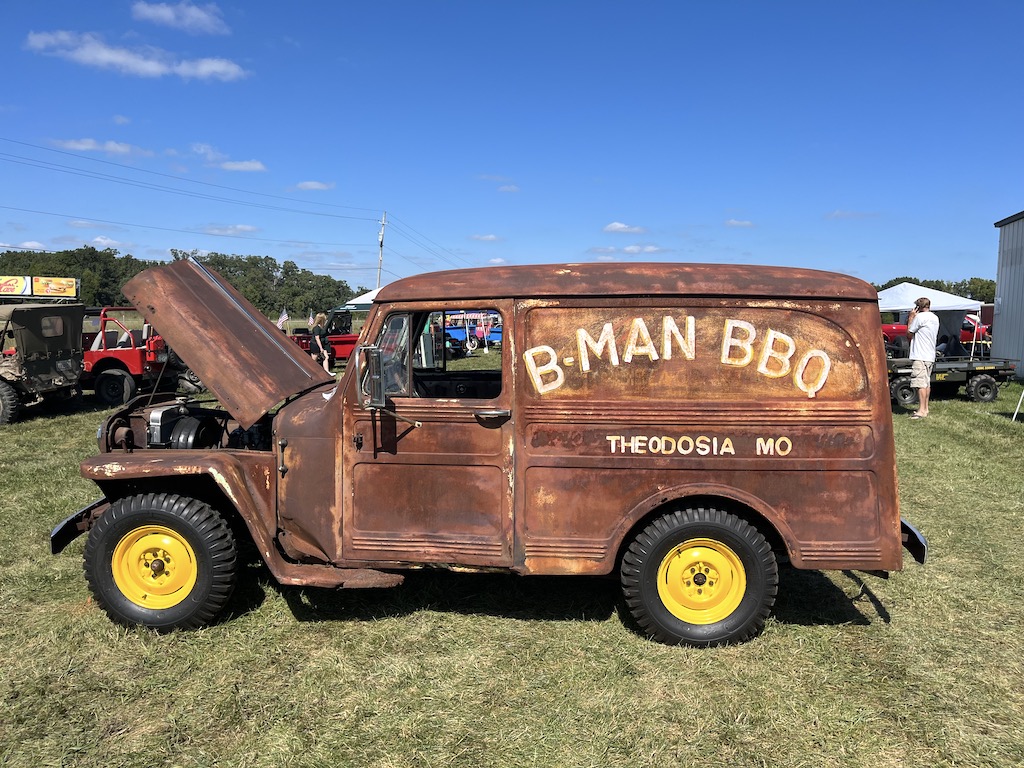
Another 1946 CJ2A with a couple of farm implements that made the Jeep popular with farmers.
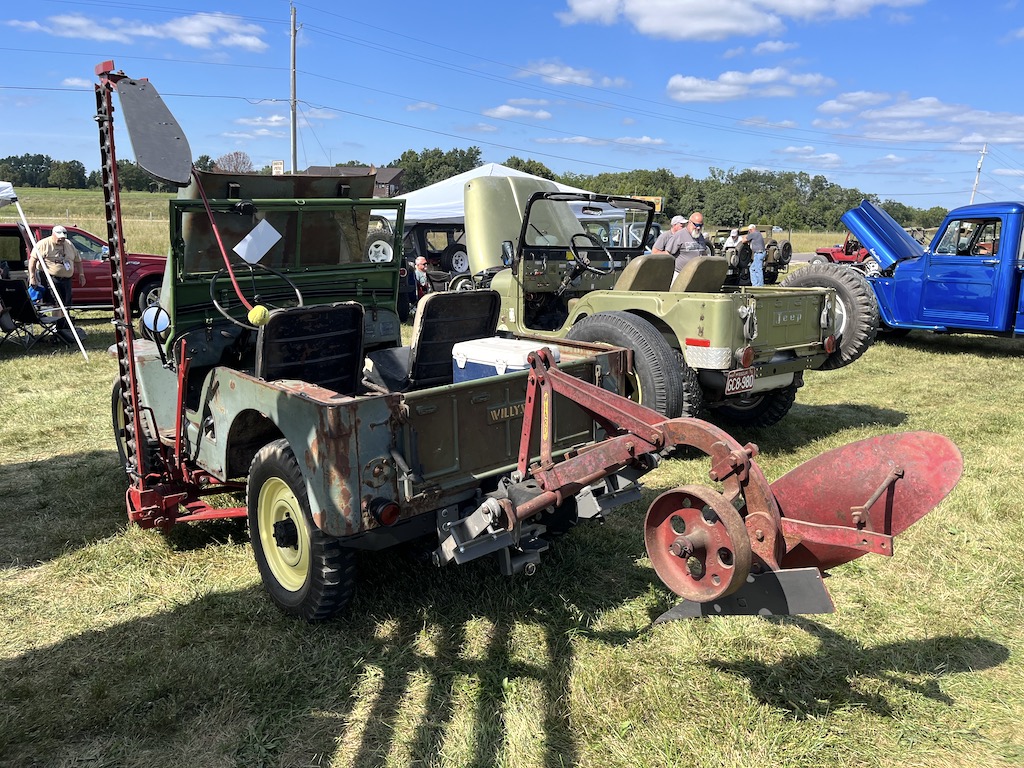
I believe this is an M274 ½-ton 4×4 utility platform truck. These were introduced in the mid-50s but I’m not sure of the year on this one. Also known as the MULE.
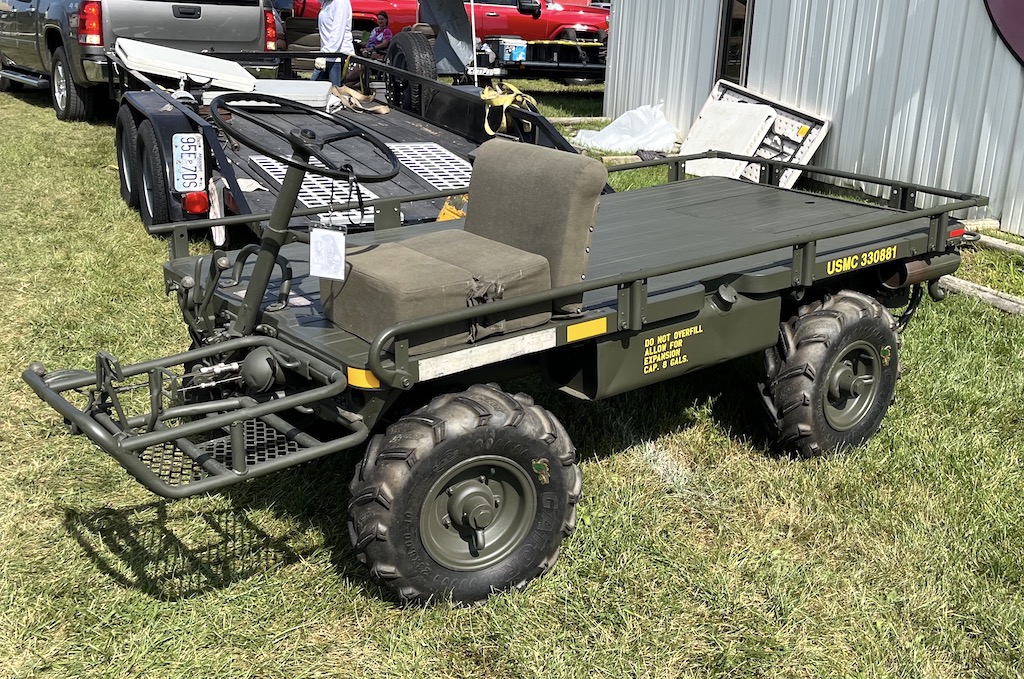
Burning Man
Burning Man is most of the things I try hardest to avoid. Crowds, traffic jams and overflowing Porta Potties. The still image below just begins to capture the size of the event. This video comes closer.
Mr. Wolf has attended Burning Man in the past and he attended this year’s event: “We got out Sunday afternoon, so glad we’re not in that traffic hell!” Fortunately he was driving/living in the EarthRoamer XV-LT.
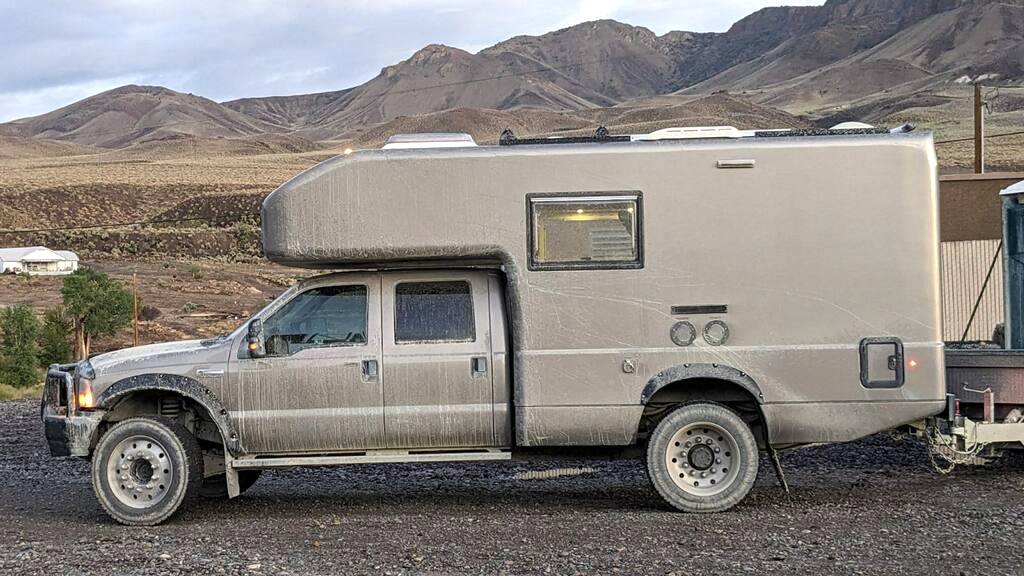
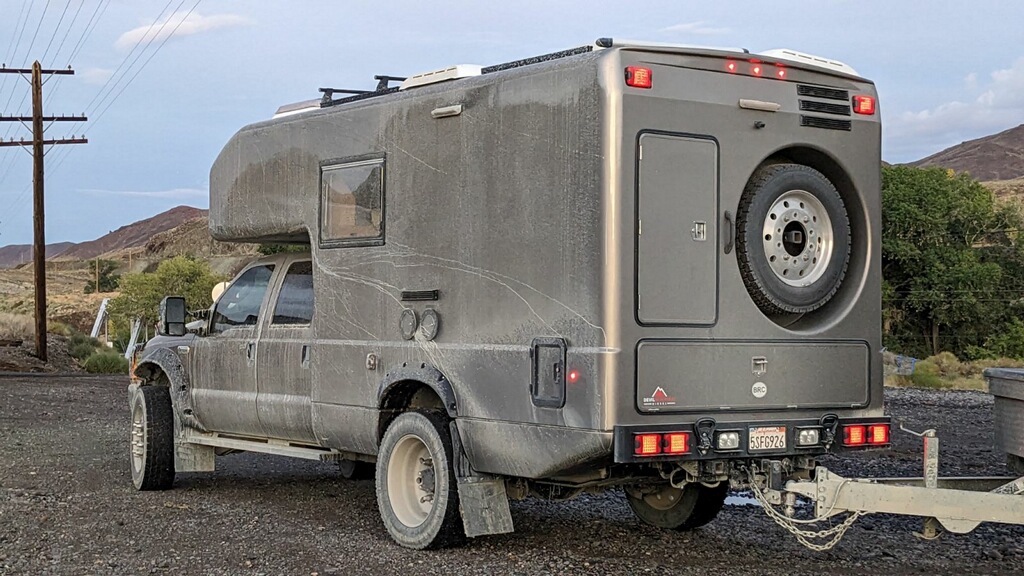
Moved the Jeep spare tire
When we finally got a spare tire for the Jeep we had it mounted on the back of the Jeep. That’s where people are used to seeing them. But it makes it difficult to see what’s going on behind when driving so I decided to find another place for it.
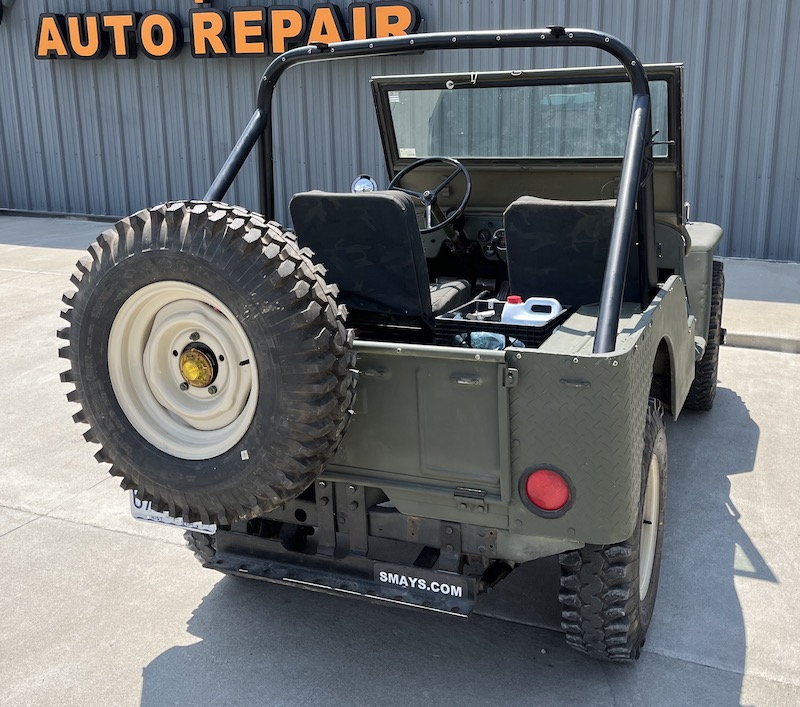
The first task was removing the tire from the mounting bar. It’s a heavy mother and I didn’t want to pull something trying to lift it so I rigged up what you see below.
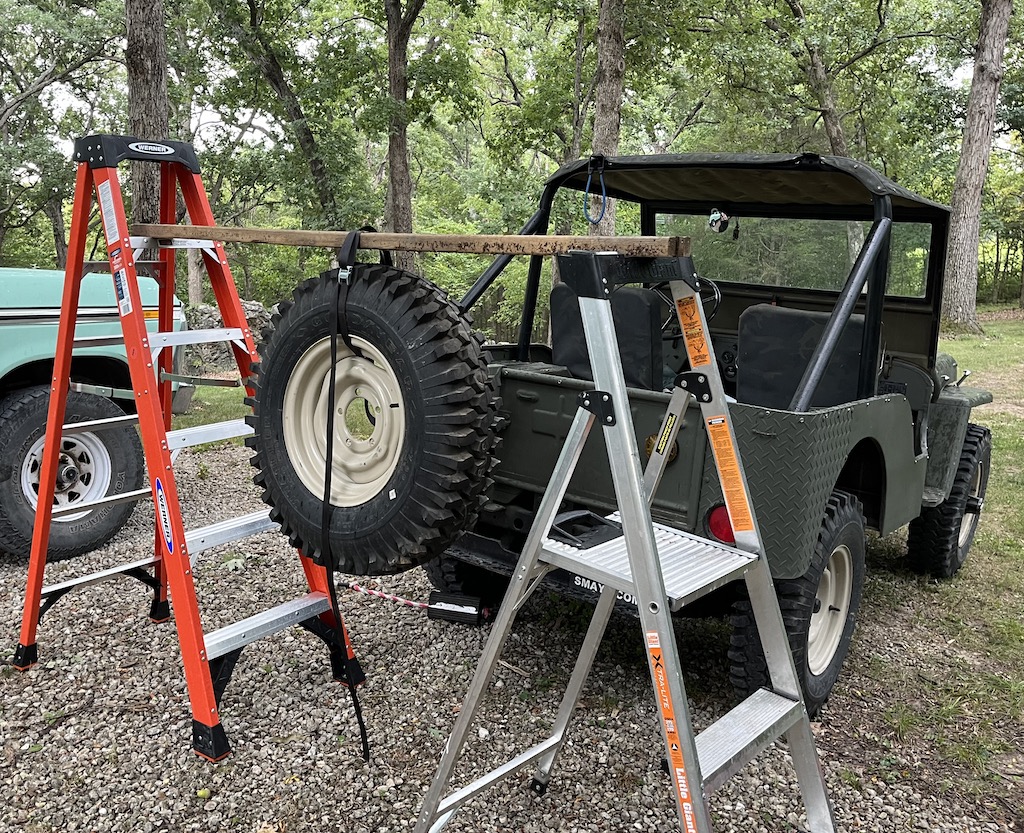
Then I wrestled it into the tub of the Jeep. Fits perfectly and the space is too small to haul much in any event.
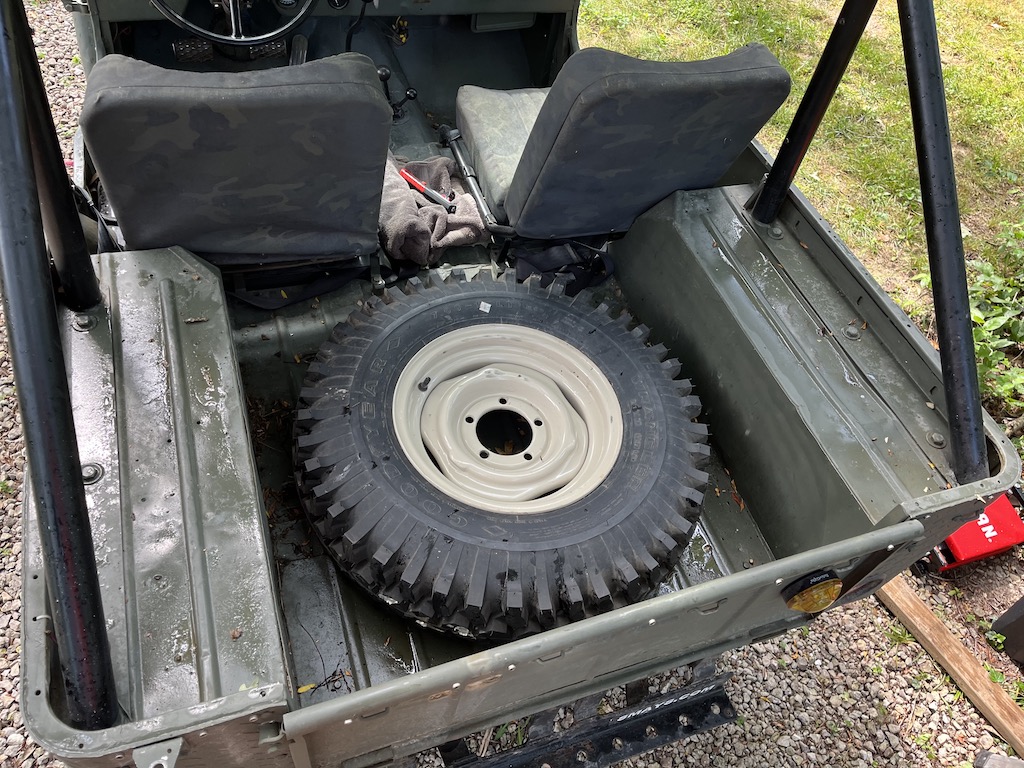
Next I covered the tire with a piece of particle board (which now has a coat of Army green paint).
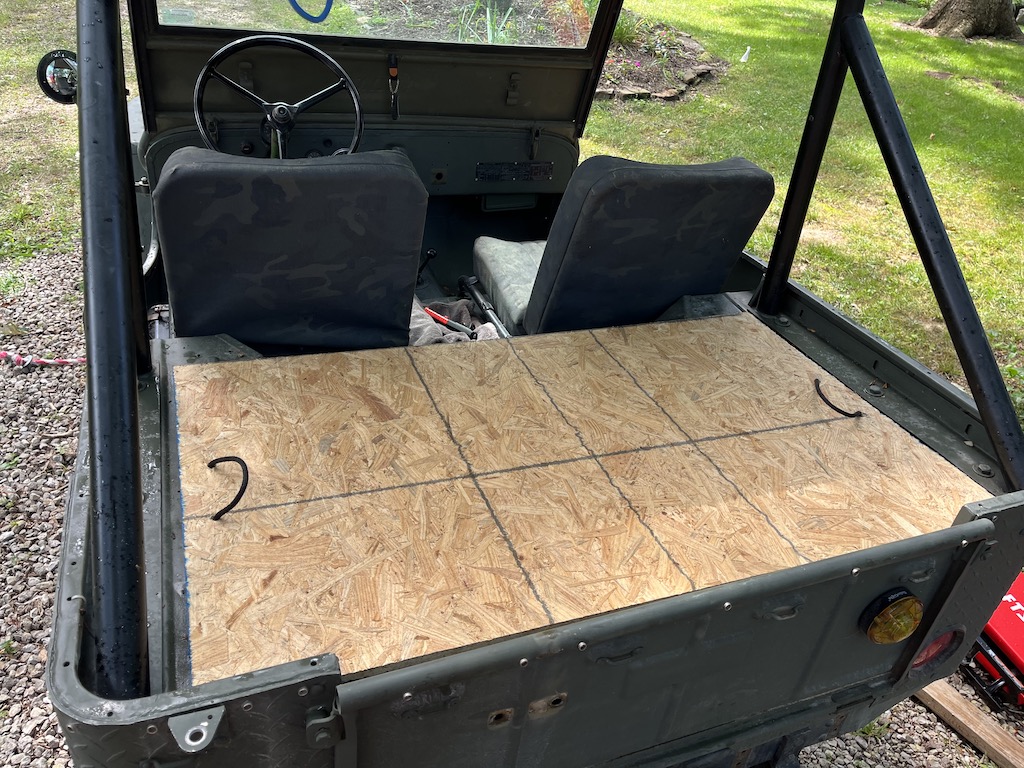
I must say I’m pleased with the result. A cleaner look and my sight lines are much improved. Especially when the canvas top goes back on this winter.
1941 Dodge WC 1/2 Ton Truck
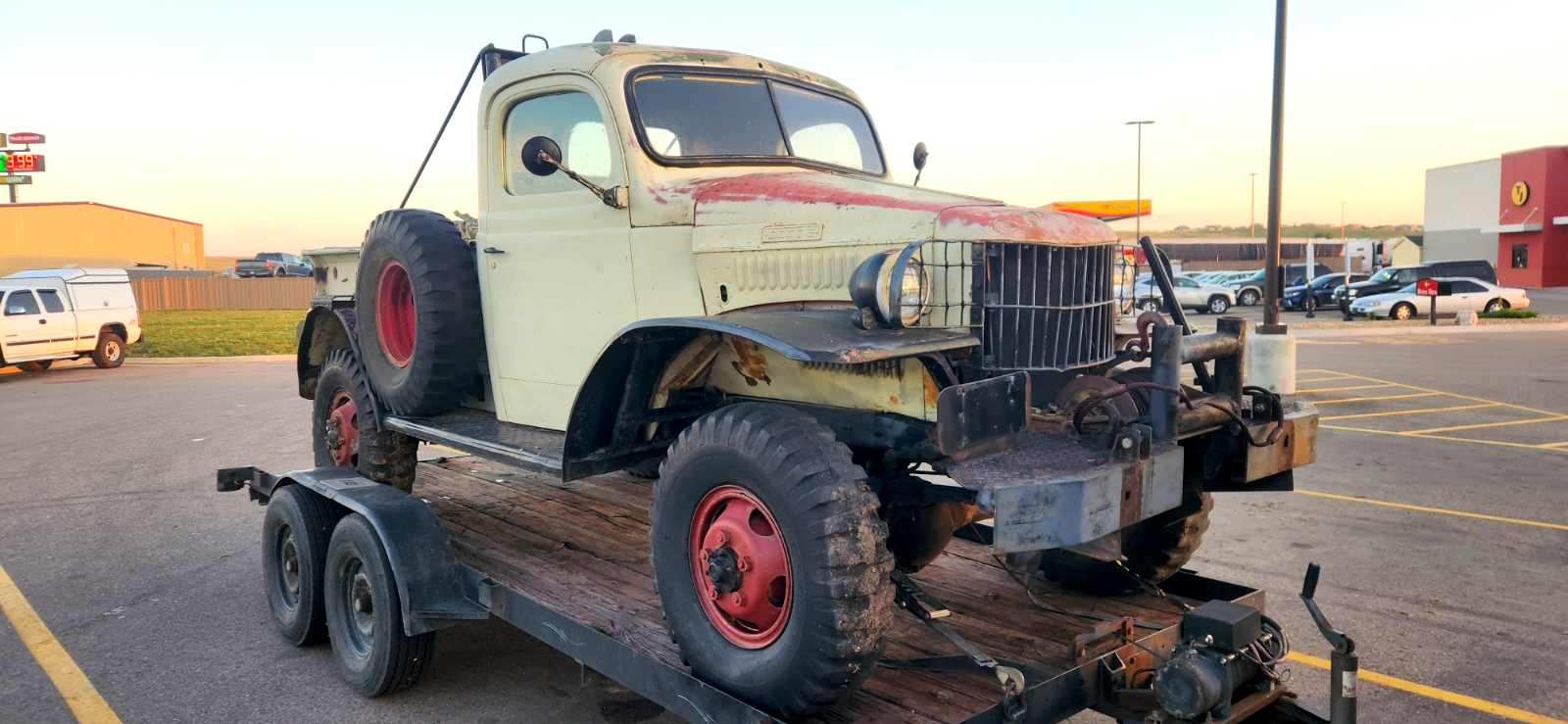 “Dodge was the U.S. Army’s main supplier of 1/2-ton trucks, and its sole supplier of both 3/4-ton trucks and 1-1/2-ton six-by-six trucks in World War II. With over a quarter million units built through August 1945, the G502 3/4-tons were the most common variants in the WC series. WC was not an abbreviation of “Weapons Carrier”, but a Dodge model code – initially W for 1941, and C for half-ton rating. However, the ‘WC’ model code was retained for both the 3/4-ton and 1-1/2-ton 6×6 Dodges – as well as for the subsequent model years”.
“Dodge was the U.S. Army’s main supplier of 1/2-ton trucks, and its sole supplier of both 3/4-ton trucks and 1-1/2-ton six-by-six trucks in World War II. With over a quarter million units built through August 1945, the G502 3/4-tons were the most common variants in the WC series. WC was not an abbreviation of “Weapons Carrier”, but a Dodge model code – initially W for 1941, and C for half-ton rating. However, the ‘WC’ model code was retained for both the 3/4-ton and 1-1/2-ton 6×6 Dodges – as well as for the subsequent model years”.
Paul and a friend trailered his vintage Bronco to Colorado for some off-roading. While there they spotted the truck above and Paul’s buddy couldn’t come home without it. Which meant Paul had to drive the Bronco 750 miles so the Dodge could have the trailer.
